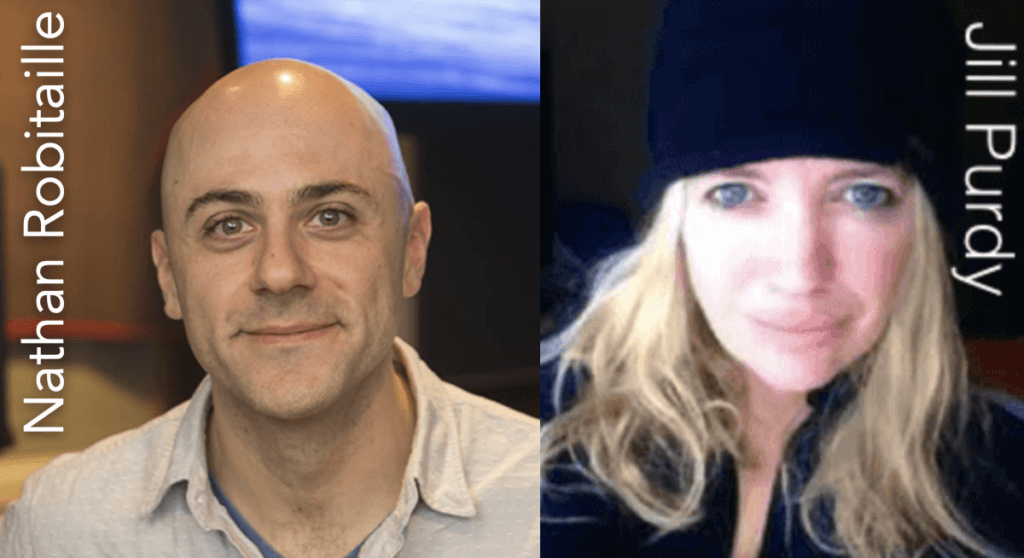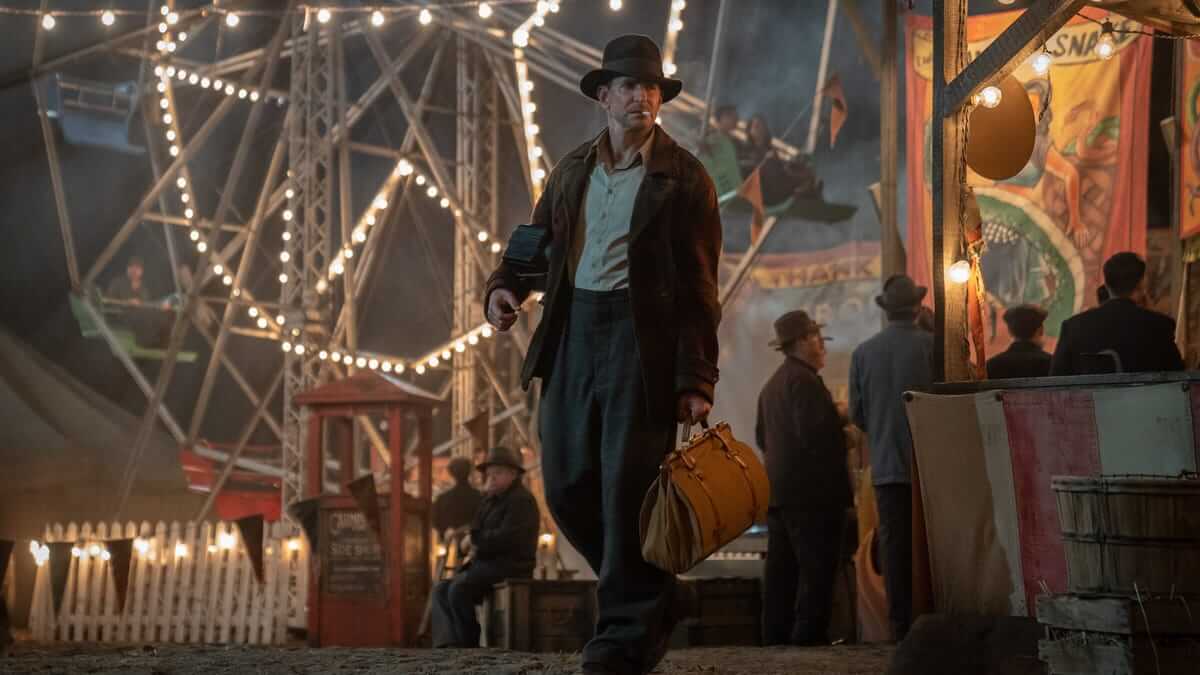We are joined by co-supervising Sound Editors Jill Purdy and Nathan Robitaille from the new Guillermo del Toro film, Nightmare Alley. They tell us about having to set the “tone” for both halves of the film, one half is open, mechanical and gritty, while the other half is sleek and contained. Jill talks about building authentic period accurate crowds and call outs through ADR and Loop Group, while Nathen discusses designing new sounds for electricity and other ear candy in the film.

Links:
Nathan Robitaille On iMDB
Jill Purdy On IMDB
Dialog in Films Article referenced by Jill and Teresa in this episode.
__________________________
The Following is a lightly edited and repaired, A.I. generated transcript of Tonebenders episode 184 – Forza Horizon 5 with Fraser Strachan. Please excuse any typos or translation mistakes made by the algorithm .
Tim Muirhead/Host
Teresa Morrow/ Host
Jill Purdy/ Co-Supervising Sound Editor on Nightmare Alley
Nathen Robitaille/ Co-Supervising Sound Editor on Nightmare Alley
__________________________
Narrator 0:17
You’re listening to Tonebenders the sound designers podcast. Let’s Do this!
Timothy Muirhead 0:29
Hey everybody, welcome to Tonebenders. My name is Tim Muirhead and I’ll be your host today. Joining me in the co-pilot seat is Teresa Morrow. Teresa, how are you doing?
Teresa Morrow 0:37
I’m doing great Tim. Today we’re going to talk about the new Guillermo del Toro film Nightmare Alley. This is a period noir film set in the 40s and follows our main character Stanton Carlisle. As he joins a carnival, he learns the ways of the grift. Then he goes on to attempt to make his way in high society.
Timothy Muirhead 0:56
I’m super excited to talk to our guests today. So let me introduce them to you. We have the film’s co supervising Sound Editors, Nathan Robitaille, and Jill Purdy, in addition to a boatload of past Golden Reel Award nominations, most of you will have heard their work on the film The shape of Water, which was nominated for Best Sound in the editing category. Welcome to the show, Nathan and Jill , how are you today?
Nathan Robitaille 0:56
Great. How are you?
Timothy Muirhead 1:00
I’m doing very well. Jill, do you want to take us through how co supervising sound editor worked? How did you to differentiate your roles on this?
Jill Purdy 1:24
So Nathan is the sound design king? And I took on the dialogue, ADR supervision. So yeah, and we work we work pretty well that way.
Timothy Muirhead 1:33
Is this your first time working with those delineated roles like that? Because on the previous film A Shape of Water, Jill, you didn’t have the Co-supervising sound editor title?
Jill Purdy 1:41
I did not I was I was strictly cutting Well, no, I wasn’t strictly cutting production. I was doing a bit of production and ADR work as well. But I wasn’t involved in anything on stage for that one. I was in that kind of behind the scenes. But this is not the first time that Nathan and I have worked in this capacity. We’ve worked together on on a few things.
Nathan Robitaille 1:58
Oh, yeah, we go way back. I started in this in this industry under the wing of Jill and Nelson and a few others. So I’ve basically been working with Jill for my entire career,
Teresa Morrow 2:10
and will mention that you guys are based in Toronto, production was based in Toronto, and we’re in Toronto. So it’s one of these unusual occasions where we’re not trying to span intercontinental time zones to do one of these podcasts. It’s also exciting for us to talk to people in Toronto, because we actually haven’t done a lot of podcast episodes, specifically with Toronto crews. So we’re really happy and privileged to have you guys here.
Timothy Muirhead 2:34
Definitely. Nathan, you’ve got a lot of pressure here. Because the last time Joe was on, she was on our dialogue editing roundtable. And it is quite literally our most popular episode we’ve ever had.
Nathan Robitaille 2:44
Amazing.
Timothy Muirhead 2:45
Yeah. So you got to live up to Jill here because she set the bar,
Jill Purdy 2:48
Well, wait a second. There were other people involved in that as well.
Timothy Muirhead 2:50
Okay. So let’s talk about Nightmare Alley. It’s a super impressive film, I had a lot of fun watching it, the way the films kind of structured as it’s divided into two parts. There’s the first part of the film that takes place in a carnival. And it’s where our main character kind of as Teresa’s mentioned in the intro learns how to do the grift. But it’s a kind of more gritty, mechanical kind of sounding world that he’s in. And then in the second half of the film, he goes to the big city, and it’s very sleek and kind of contained sound to the film. Maybe we can start at the beginning and take apart the first half of the film. A lot of it takes place inside these big carnival tents. And they kind of have a presence throughout the film The sound of the tents flopping. How did you come to include those sounds? And what was your thought process behind that? Maybe Nathan, you want to grab that?
Click on Page 2 below, to read the rest of the transcription of this episode.
Pages: 1 2

